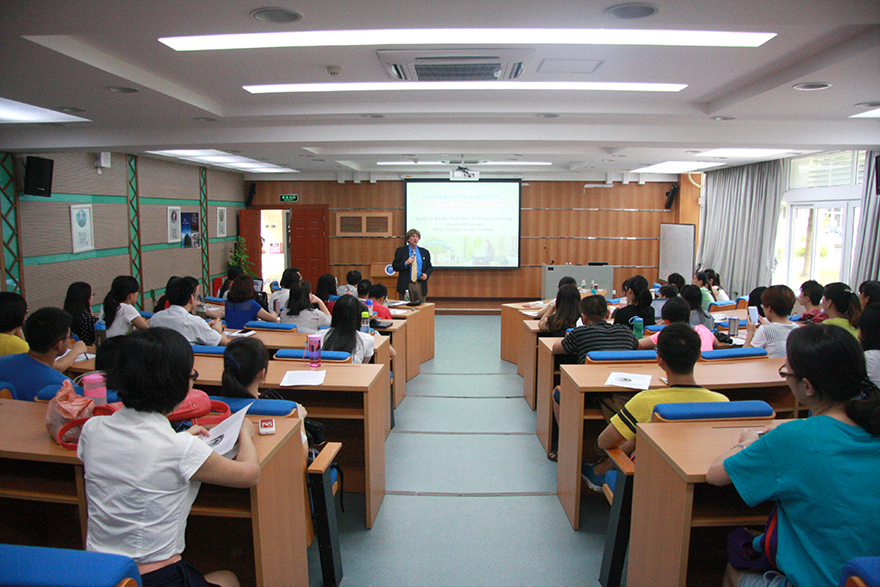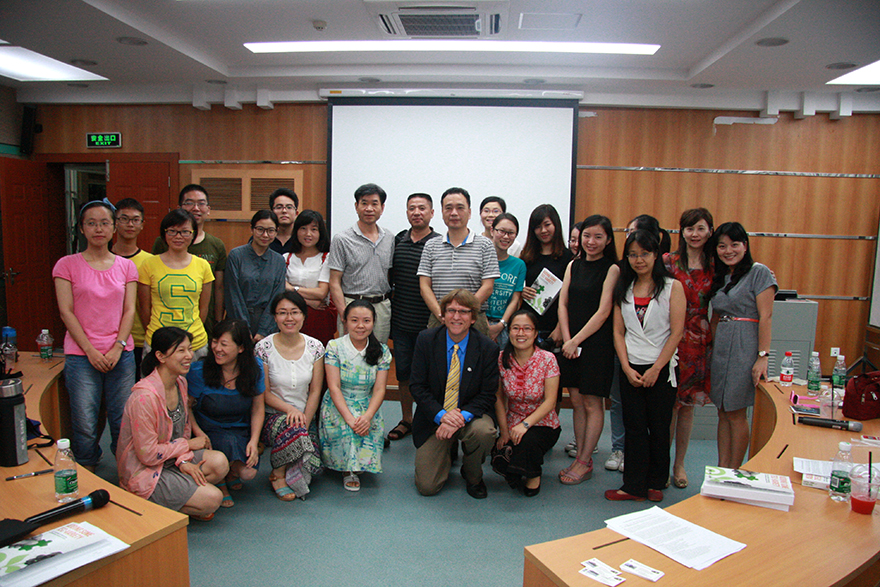On June 11th, Professor Curtis J. Bonk from Indiana University delivered his lecture; learning is changing, in classroom 103 of the ninth teaching building on the North Campus. Specialists and scholars as well as students from different schools attended the lecture.
Professor Curtis first did a poll among the audience about their learning conditions to bring the focus of the group to his topic: learning is changing during several decades. Then he introduced the history of the development of learning tools and learning styles of people around the world with his vivid examples and personal experiences. During the process, he also mentioned the smartphone separation anxiety and other symptoms caused by the advanced technology in use today.

Professor Curtis J. Bonk from Indiana University delivered his lecture; learning is changing
Stepping into in-depth discussion, Professor Curtis elaborated that learning is becoming more and more flipped, game-based, collaborative, adventurous, synchronous, digital, resource rich, massive, personal and direct to the expert. In a word, learning now means everyone can learn anything he wants from anyone at any time. He said, with all these technologies, thousands of organizations and scholars are sharing their course materials, expertise and teaching ideas globally, widely expanding the learning opportunities and resources. But this is only a sample of the great start of the open education story. And that’s why Massive Open Online Courses (MOOC’s) emerged.
After the intermission, Professor Bonk asked the audience what words would occur to them at the thought of engagement. In order to motivate people, he awarded the ones who volunteered to answer. The prelude naturally led to his main topic. He carried on his previous speech by revealing the best practices he has seen around the globe.

He emphasized the interaction, collaboration and engagement for online coursed. Especially with the emergence of massive open online courses (MOOC’s), the present situation is more precarious and the need for a remedy more urgent. Hence, Professor Bonk introduced the TEC-VARIETY framework to tackle the lack of meaningful engagement. The method benefited both online learners and instructors. He offered 100 practical yet innovative ideas based on decades of his teaching experience to animatedly demonstrate the TEC-VARIETY framework. For enriching his point of view, he also added another method he wrote about in 2008, that is, the read, reflect, display, and do (R2D2) model. This R2D2 model addressed more diverse learner needs, so some regarded it as a knowledge acquisition and problem solving wheel. Professor Bonk explained the model in four phases each of which had different essentials. The first emphasized reading, listening and text-based activities; the second highlighted the observational side of learning; the third highlighted visual forms of learning; the fourth emphasized practice or hands-on experimentation with the learned content. At the end of the lecture, Professor Bonk answered audiences’ question with patience. He provided the Internet link of his books with generosity, so that everyone could read for free.

